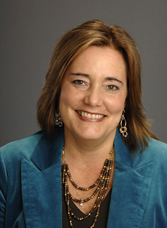Class of 2012 Breaks BU Records
Largest applicant pool shows growth in African-American, Hispanic interest

Boston University continued its upward trend in high school applications this year, breaking last year’s record of 33,894 by more than 4,000 applicants. The 37,964 high school students who applied to BU’s Class of 2012 — the most in BU history — represent a 12.1 percent increase over last year.
The increase is evenly distributed across all schools and colleges, geographic areas, and ethnicities, according to Laurie Pohl, vice president for enrollment and student affairs. “BU is hot right now,” she says. “High school students know that BU will deliver on its promise to be a vibrant and exciting school.”
One of the areas that saw a jump was minority applicants. Students who identified themselves as African-American submitted 2,018 applications, up 23 percent from last year, and Hispanic and Latino students sent in 2,995 applications, an increase of 21.9 percent.
“We have put tremendous efforts into making good on BU’s tradition of being an open and inclusive place,” Pohl says. “We want our underrepresented minority students to find a welcoming and academically challenging community where they will have successful careers, here and afterward.”
One factor in the surge may be the ease of applying to BU: although students have long been able to submit a common application — one form that’s accepted at nearly 300 colleges, including Northeastern University, Boston College, and Tufts University — this year it’s the only application BU accepted.
Additionally, more international students are considering BU. The University received 3,812 international applications this year — up 29 percent — from more than 100 foreign countries, the majority from China, India, and Korea. Domestically, students applied from all 50 states.
Pohl also notes that nationwide, the pool of 18-year-olds graduating from high school is bigger, and students are, on average, applying to more colleges. “High school guidance counselors encourage students to apply to four schools at a minimum,” she says, “and most students apply to six, seven, or more.”
Other statistics for the Class of 2012 remain virtually unchanged. Female applicants account for 59.5 percent of the total, a .3 percent increase from last year. Average SAT scores in critical reading and math, at 1250, are 10 points lower. The average high school GPA (3.5) saw a .05 increase, and average class rank (top 18 percent) decreased by one percent.
Despite the last decade’s upward trend among high school graduates, Pohl warns that within the next year or two, the numbers will top off and eventually decrease. “We’re seeing the last generation of baby boomers’ kids graduate,” she says, “and pretty soon, we’ll experience an overall decline.”
But in the African-American and Hispanic communities, the number of high school graduates — particularly first-generation graduates — is expected to increase. In anticipation of this trend, BU has been recruiting heavily in the last decade from states with large Hispanic populations, most notably California, Florida, and Texas.
“In this last year alone, we saw a 21 percent increase in applications from Florida,” Pohl says. “California is among our top 5 states in terms of enrollment and applications, and Texas and Florida are among the top 10.”
The state with the most applicants is New York, which saw a 13 percent increase in applications.
Students will be notified of their acceptance to BU by April 1, and they must accept by May 1. The University will admit about 4,200 freshmen to the Class of 2012.
Vicky Waltz can be reached at vwaltz@bu.edu.
Comments & Discussion
Boston University moderates comments to facilitate an informed, substantive, civil conversation. Abusive, profane, self-promotional, misleading, incoherent or off-topic comments will be rejected. Moderators are staffed during regular business hours (EST) and can only accept comments written in English. Statistics or facts must include a citation or a link to the citation.